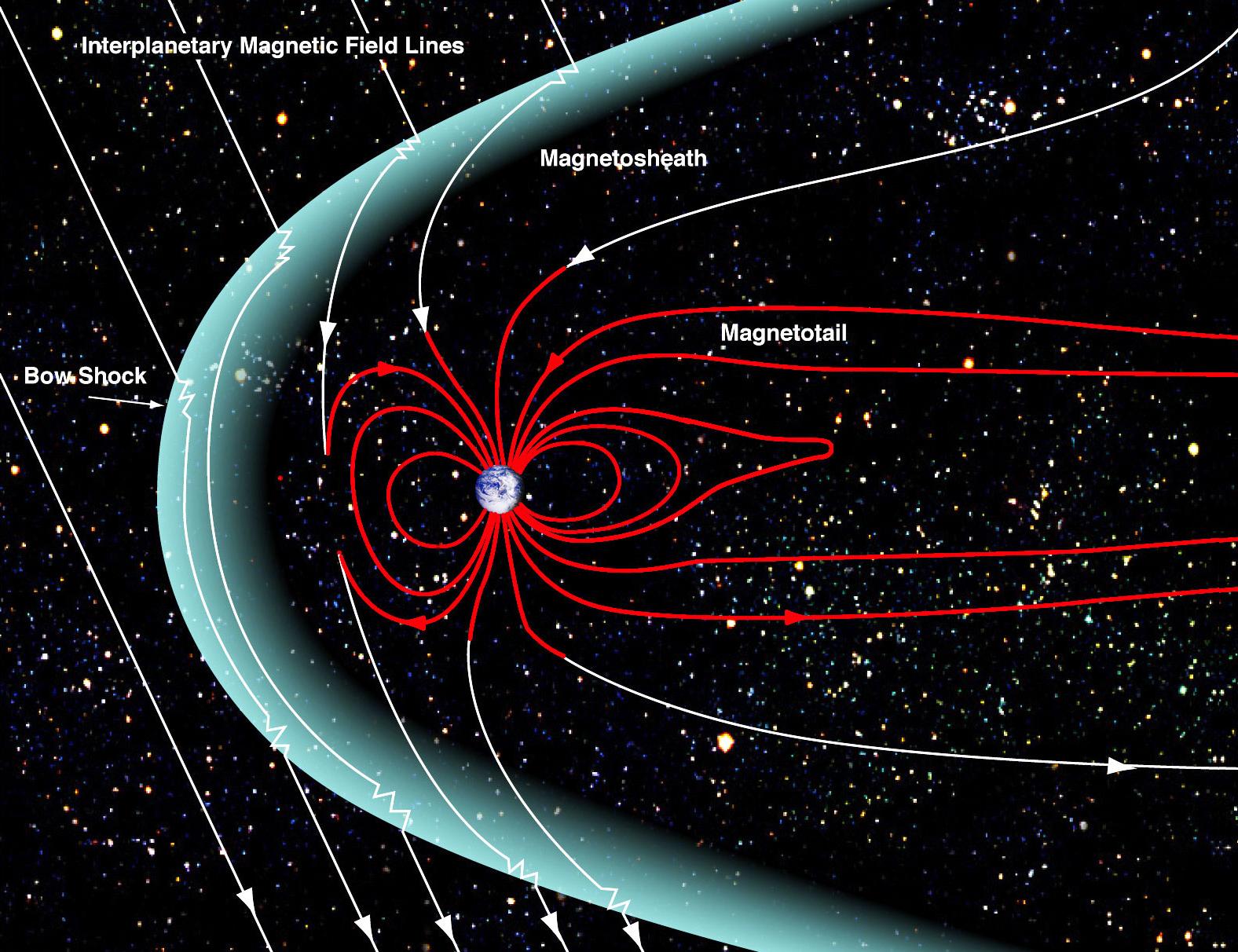Is Gut-Wrenching Space Travel Possible?
Our intestinal tracts are amazingly designed to withstand a high degree of stress. However, a new set of experiments establishes that there are limits to how much stress our intestinal tracts can tolerate. In particular, the experiments show that deep space travel will do irreparable, life-threatening damage to our intestines, which creates a severely limiting factor for people who envision a future where humans can travel to other planets and colonize them.
For obvious ethical reasons, the experiments were not performed on human beings—they were done on mice. Biologists have long recognized that the digestive tracts of mice are an excellent proxy for those of humans.
Four research scientists and medical doctors at Georgetown University in Washington, DC, led by postdoctoral fellow Santosh Kumar, performed experiments on mice that they designed to mirror the exposure to galactic cosmic radiation that astronauts would experience (e.g., on a space flight to Mars). Kumar’s team exposed laboratory mice to the equivalent of the heavy ion radiation that is known to exist beyond Earth’s magnetosphere (see figure 1).
Figure 1: Earth’s Magnetosphere. Serious exposure to heavy ion galactic cosmic radiation occurs in regions beyond the outer red lines emanating from Earth in the above figure. Image credit: NASA
About 99 percent of galactic cosmic radiation is comprised of single protons, electrons, and helium nuclei. There are nine times as many helium nuclei as there are electrons and ten times as many protons as there are helium nuclei. Ions heavier than helium nuclei—for example, carbon-12, oxygen-16, silicon-28, and iron-56 nuclei—make up just one percent of all galactic cosmic rays.
Even though heavy nuclei make up such a tiny percentage, they inflict more biological damage than all the other forms of galactic cosmic radiation. Another reason heavy nuclei cosmic radiation caught the attention of Kumar’s team is that there is no technology available, or even conceivable, to protect astronauts in a spacecraft from heavy ion radiation. Furthermore, scientists know that at least 30 percent of astronauts’ cells will be hit by heavy ions during a round-trip to Mars.1
Previous research done by the Georgetown University team had demonstrated that “exposure to heavy ion radiation induces persistent oxidative stress in mouse intestine.”2 Another research study by the same team showed that heavy ion radiation induces intestinal malignant tumors in mice.3 The team’s goal in their present study was to determine (1) how heavy ion radiation modulates molecular events in the intestines that are associated with intestinal epithelial cell migration, and (2) the consequences of such modulation.
Epithelial cells both perform the primary functions in digestion and absorption of nutrients and form a barrier that prevents toxic chemicals and pathogens from entering into the rest of the body. The small intestine contains two regions: one housing flask-shaped structures known as crypts and the other housing finger-like protrusions known as villi.
Kumar’s team showed that even a low dose of iron-56 radiation relative to control and gamma rays persistently decreased epithelial cell migration along the crypt-villus axis.4 Any degradation in the coordinated, efficient migration of epithelial cells along the crypt-villus axis causes all the functions of the small intestine to be compromised. Such degradation also allows pathological processes to invade gastrointestinal tissues.
The experiments performed by Kumar’s team showed that in addition to degraded epithelial cell migration, heavy ion radiation increased intestinal cell proliferation with accompanying DNA damage, increased cell senescence without any noticeable increase in apoptosis, and compromised cell polarity, cell adhesion, and cell-extracellular matrix interactions.5 The team’s experiments showed that all these consequences persisted even one year after exposure to heavy ion radiation. Such consequences are known to induce inflammatory intestinal and bowel diseases and to generate malignant tumors.
In their paper the team drew the following conclusion, “When considered along with changes in barrier function and nutrient absorption factors as well as increased intestinal tumorigenesis, our in vivo data raise a serious concern for long-duration deep-space manned mission.”6 Their conclusion is understated. Astronauts on such missions would experience discomfort and loss of energy to a degree that would make it difficult, if not impossible, for them to perform their mission tasks. Furthermore, the likely inflammatory diseases and cancers could completely incapacitate and even kill them.
Much more significant conclusions can be drawn from the paper. First, humans should never venture outside of Earth’s magnetosphere for more than just a few days. The International Space Station orbits inside Earth’s magnetosphere. While a manned mission to the Moon entails humans spending some time outside Earth’s magnetosphere, that time can be limited to 1–3 days. Any mission beyond the Moon’s distance from Earth must be limited to machines.
For the past several billion years, Earth has possessed a strong, stable magnetic field—an outcome considered impossible for a planet as small as Earth. What made the impossible probable was that during its youth, Earth experienced a number of unique events that super-enriched its interior with exact abundances of certain heavy elements and radioisotopes. You can read about these events in my book, Improbable Planet.7 The most important conclusion to be drawn from the team’s study is that we should all thank God for the miraculous design of Earth’s interior that makes Earth’s magnetosphere possible.
Endnotes
- B. Curtis and J. R. Letaw, “Galactic Cosmic Rays and Cell-Hit Frequencies Outside the Magnetosphere,” Advances in Space Research9 (October 1989): 293–98, doi:10.1016/0273-1177(89)90452-3; Daniel Matthiä et al., “The Radiation Environment on the Surface of Mars—Summary of Model Calculations and Comparison to RAD Data,” Life Sciences in Space Research 14 (August 2017): 18–28, doi:10.1016/j.lssr.2017.06.003; Kanako Hayatsu et al., “HZE Particle and Neutron Dosages from Cosmic Rays on the Lunar Surface,” Journal of the Physical Society of Japan 78, Supplement A (2009): 149–52, doi:10.1143/JPSJS.78SA.149.
- Kamal Datta et al., “Exposure to Heavy Ion Radiation Induces Persistent Oxidative Stress in Mouse Intestine,” PLoS One7 (August 24, 2012): id. e42224, doi:10.1371/journal.pone.0042224.
- Shubhankar Suman et al., “Relative Biological Effectiveness of Energetic Heavy Ions for Intestinal Tumorigenesis Shows Male Preponderance and Radiation Type and Energy Dependence in APC1638N/+ Mice,” International Journal of Radiation Oncology*Biology*Physics”95 (May 1, 2016): 131–38, doi:10.1016/j.ijrobp.2015.10.057.
- Santosh Kumar et al., “Space Radiation Triggers Persistent Stress Response, Increases Senescent Signaling, and Decreases Cell Migration in Mouse Intestine,” Proceedings of the National Academy of Sciences USA. Published ahead of print, October 1, 2018. doi:10.1073/pnas.1807522115.
- Kumar et al., “Space Radiation.”
- Kumar et al., “Space Radiation.”
- Hugh Ross, Improbable Planet: How Earth Became Humanity’s Home (Grand Rapids, MI: Baker, 2016), chapters 2–7.







